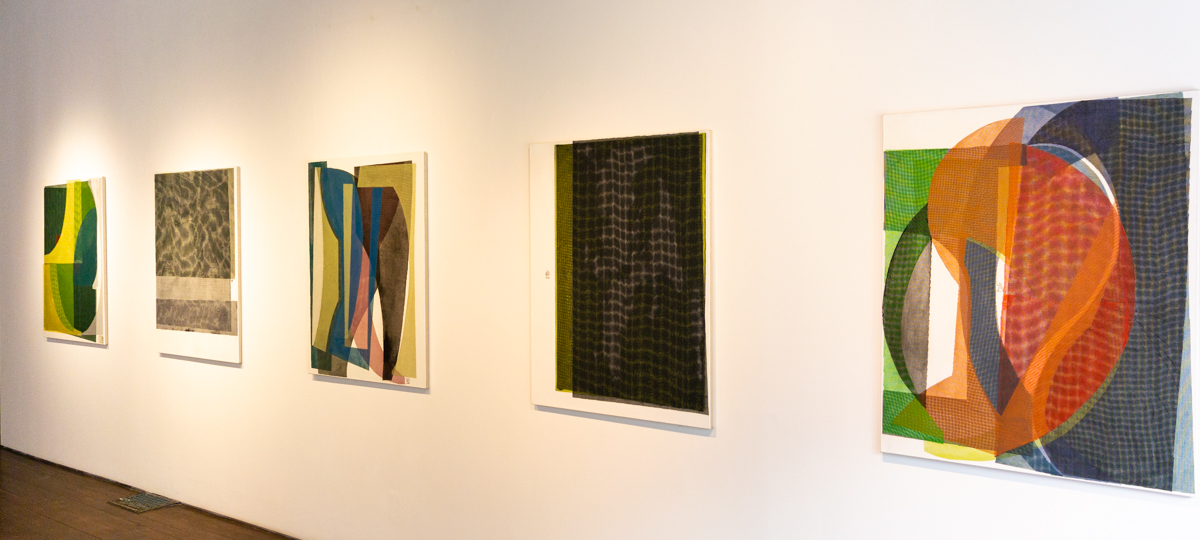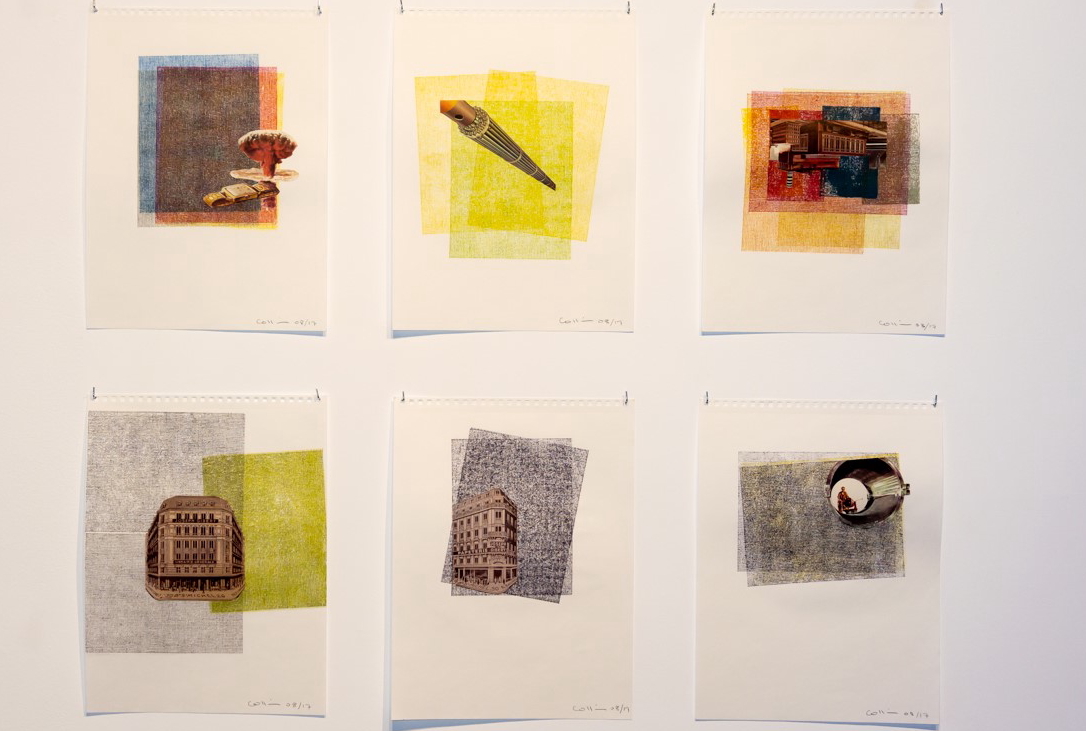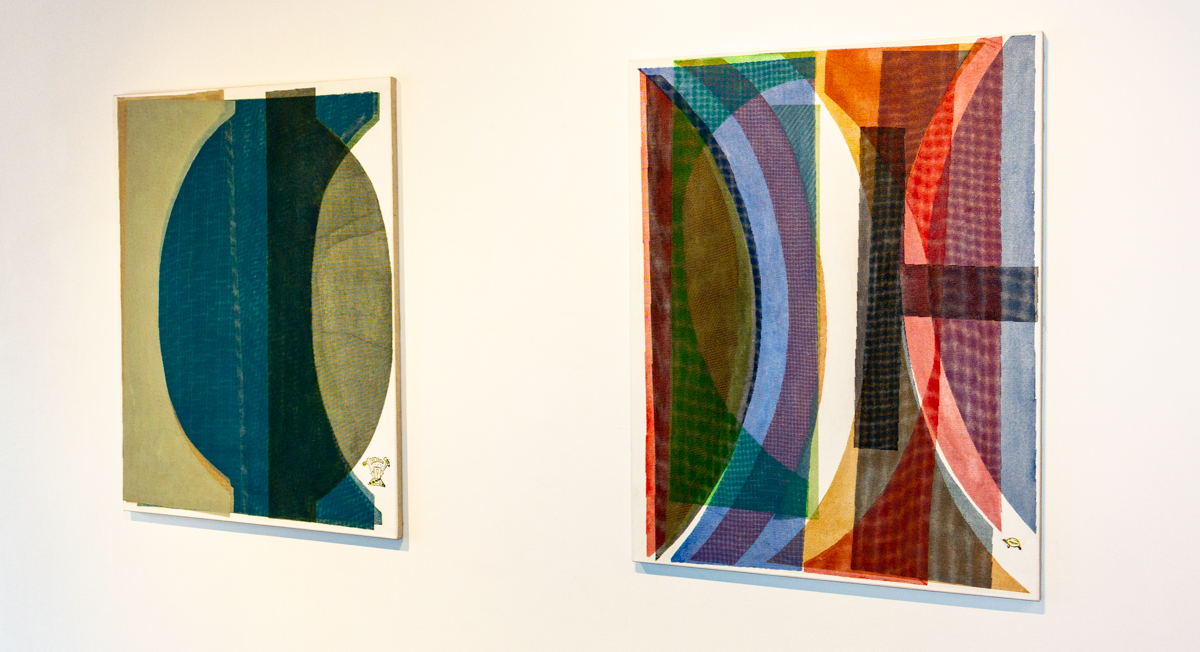Paul Collins’ show at General Hardware Contemporary represents an interesting new direction for the artist. Building on his earlier processes and techniques, he takes the work into fresh territory, offering subtle surprises along the way.
On first impression, these eight paintings seem to be inspired by modernist abstraction. There are geometric connections to cubist works by artists such as Juan Gris. The arrangement of rectangular and curved shapes recalls the compositions of Ben Nicholson. One is tempted to ‘decipher’ the images. Are there figures in these shapes? Or objects? Typography? The paintings don’t willingly resolve to a depiction of subject matter; they remain abstract, non-representational compositions.
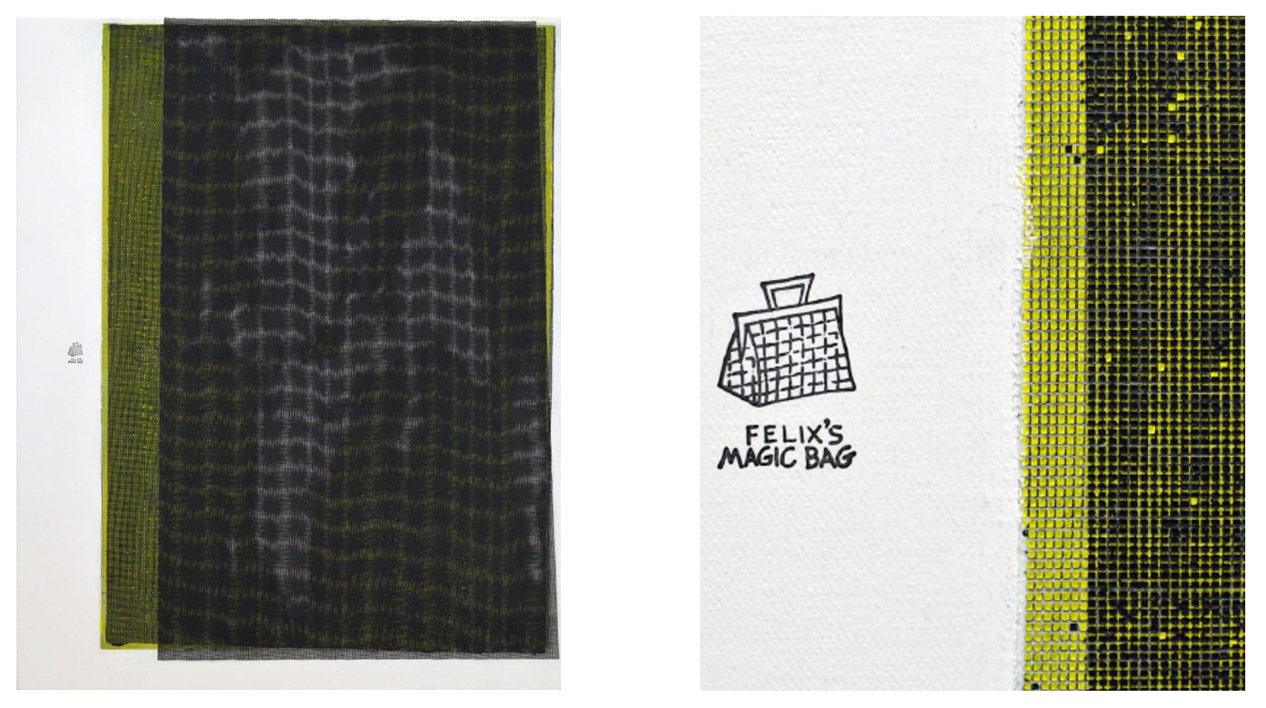
On closer inspection, patterns emerge within the fields of colour. In some areas there are textures reminiscent of wood grain or, as in Untitled (Felix’s Magic Bag) soft lattice patterns. You’re drawn in to examine the materiality of the surface. Close up, you discover that the shapes are made up of fine grids. The hazy, gossamer patterns are the result of stacked grids that create interference, or moiré patterns. It looks almost like fabric, but it’s all paint, applied in a special print-like method developed by the artist.
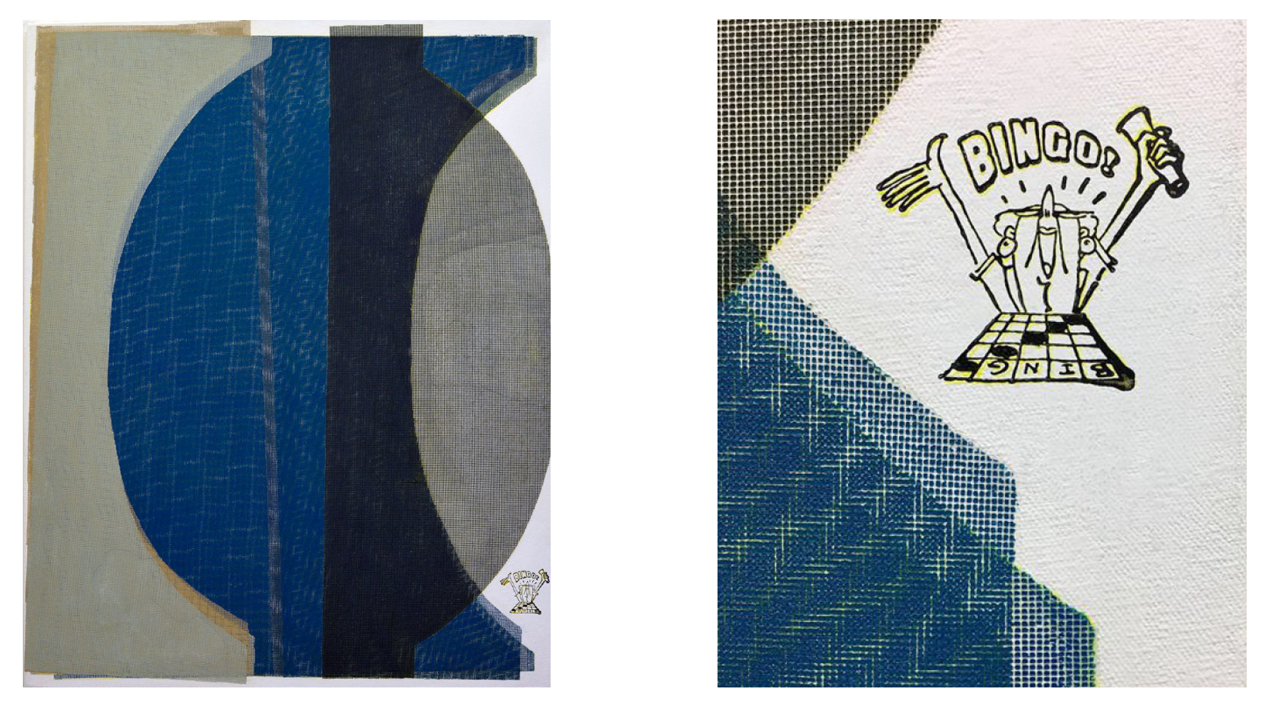
While still up close, there’s another surprise to be discovered. Each painting has a small rubber-stamped image strategically placed on the surface. Had they been larger elements within the compositions, these little cartoons would read as pop-art references, but their small size makes the experience very different. Marginalia, the title of the show, refers to comments or marks made in the margin of a text. Like a margin note, these images have the effect of adding to, as well as disrupting the main narrative of the image. They add humour to the pieces, and they may send you off again, trying to decipher meaning in these enigmatic paintings.
Collins’ unique process is a result of continual experimentation. Throughout his career, his work has spanned media and techniques from photography, printmaking, painting and music. Printing as painting is something that he has investigated before. In the nineties he developed a process of mono-print painting where he would create images with bubble wrap. Popped and un-popped bubbles acted as pixels when run through a printing press.
A common thread shared with his earlier work is what Collins calls ‘distanced’ painting. The idea is that there is a mediating element between the hand of the artist and the paint on the canvas. The materials that produce the image: the bubble-wrap, the width of masking tape and now the screens, stand between the artist and the image that is generated.
Collins sees this new body of work as a breakthrough. It started with small collages produced in the summer while away from the studio. Made with a canvas patterned rubber stamp, they combine rectangles of overlapping coloured ink with collaged images from an illustrated book from the 60’s: Atomic Energy by Matthew J. Gaines (1969).
Searching for a method to scale things up, Collins tried ‘printing’ with various types of rough fabric onto canvas. He eventually settled on fly-screen mesh. His process involves gently gluing cut-out mesh to the canvas, stenciling paint through it, and then pulling the mesh away. Further research went into determining the timing of the process, the requisite viscosity of the paint and the influence of other factors such as room temperature and humidity.
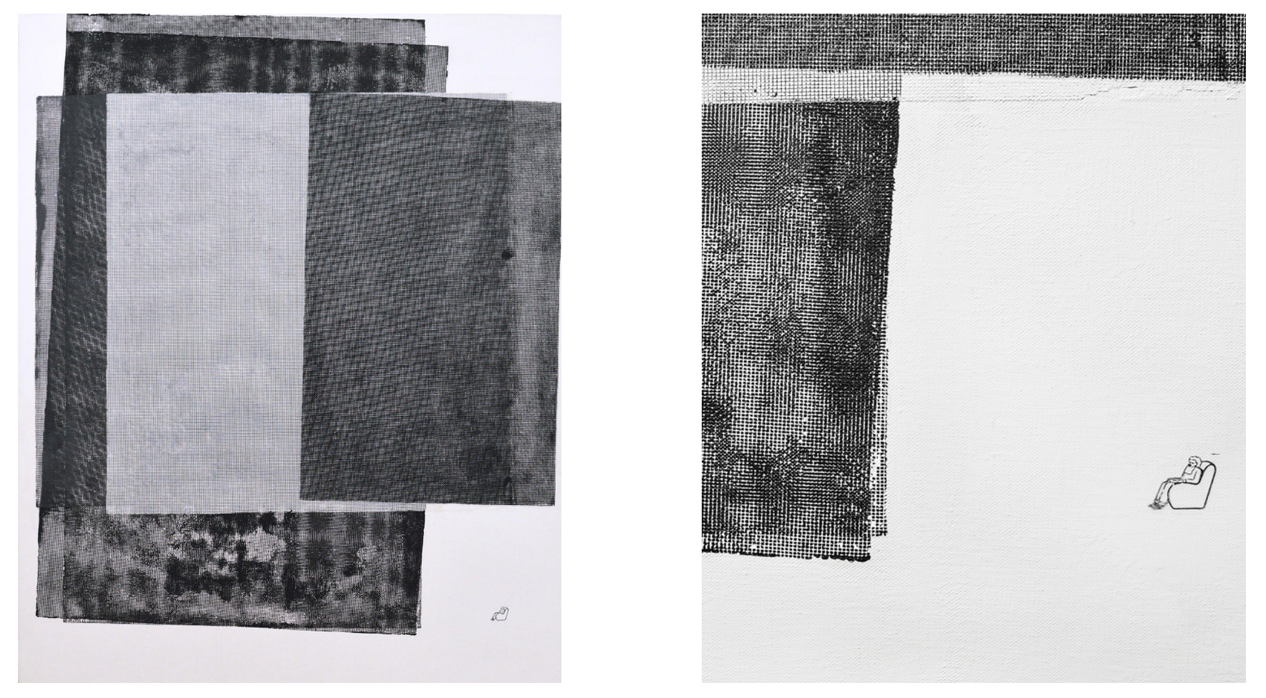
The process of making each piece involves giving up some control. The artist alternates between making decisions about what to do and reacting to what the paint does. To start a piece, Collins decides on the first shape and paints through it. When he pulls the mesh off, he discovers how the capillary action has moved the paint around. He then arranges the next piece and decides on a colour. If the piece overlaps the first shape, he has some control of the moiré pattern as he rotates the mesh. As the paint penetrates the mesh, random factors determine how dense and opaque the colour is. The result then informs the artist’s next move. Collins keeps going until he determines that the composition is finished. As a last step, the little rubber stamp image is added. The choice of stamp and its placement might be related to visual elements in the painting or to the creative act itself.
Collins’ Marginalia series is the result of a methodical process that is paradoxically balanced between intent and randomness. He describes his earlier work as having a defined set of steps, whereas of the Marginalia work he says, “for the first time in decades, I don’t know what is happening.” The work is disciplined by the constraints that the artist has put around the process: the consistent canvas size and background, the use of mesh for every shape and single stamped image. Within this system, the artist must react to the image as it evolves. Collins has designed a generative system where the results can not be imagined at the start of the process; where the happy accidents of technique help build the painting.
Mikael Sandblom
*Exhibition information: March 2 – 31, 2019, General Hardware Contemporary, Front Gallery, 1520 Queen Street West, Toronto. Gallery hours: Wed – Sat, 12 – 6 pm.

